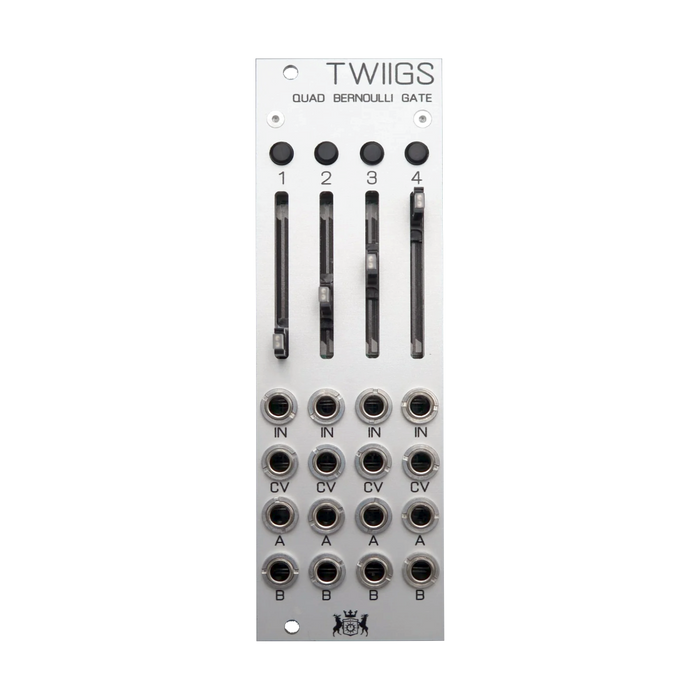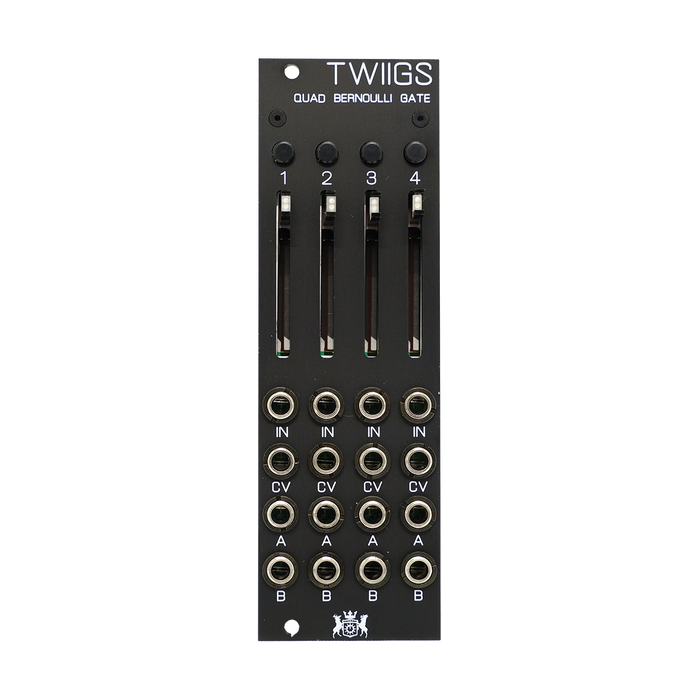
Michigan Synth Works Twiigs
Format: Eurorack
Width: 8HP
Depth: Skiff friendly design
Current: 50mA @ + 12V, 1mA @ -12V
* This module can connect the -12V side of the power cable to either
*This module is produced by Michigan Synth Works based on Mutable Instruments' original open-source circuit diagrams and software that have been modified and published by a third party. Not a product of Mutalbe Instruments.See below for each source
Derivative Panels, PCBs & Schematics provided by Jakplugg under creative commons CC-BY-SA-3.0 license.
Original CAD file, PCB & Schematic and original design elements provided by Mutable Instruments under creative commons CC-BY-SA-3.0 license.





